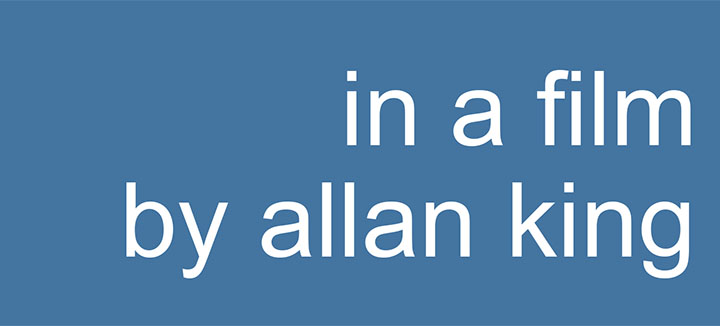
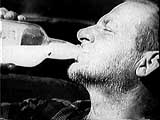
Skid Row (1956)
Allan King: producer/director
40 minutes
A heavy handed film about men on Skid Row in Vancouver, British Columbia. The film interviews several men about their past, why they're on Skid Row and how they survive. The men interviewed explain their past and also explain a little of what life is like on Skid Row, talking directly to the interviewer and the camera.
". . .they are self-destructive people who get intense pleasure from getting drunk and intense pleasure from being miserable afterwards. . .They're very lost people who have been seriously deprived. . ." -Allan King
 QuickTime clip: A skid row denizen talks of his life and plans
QuickTime clip: A skid row denizen talks of his life and plans
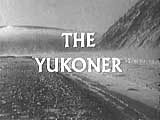
The Yukoner (1956)
Allan King: producer
28 minutes
A charming documentary about the lives of the men and women who went to the Yukon in search of gold and are still there. The film uses a voice over to tell about the old men and women, and also uses the voices of the people in the film. It's a bit forced at times as it tries to show the life of the Yukon during the gold rush in too happy a light.
". . .a quite nice if rather sentimental film . . .I still like certain things in The Yukoner although it looks a bit clumsy and amateur. . ." -Allan King
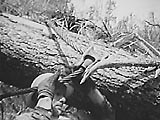
Gyppo Logging (1956)
Allan King: producer
30 minutes
This documentary examines the lives of loggers in small camps along the coast of British Columbia. In one of the most dangerous businesses in the world, loggers endure great hardships and solitude for the promise of fortune. Unlike those of the major logging companies, the loggers of Gyppo Logging work in a make-shift setting, where they are only as good as their ability to think on their feet.
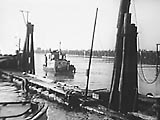
Portrait of a Harbour (1956)
Allan King: producer
30 minutes
A day in the life of Vancouver Harbour is examined in this CBC documentary. The film examines sea port life from a variety of perspectives. From the men who work the tugboats seven days a week, to the Japanese sea captains who navigate the waters of the Pacific, life at sea is a very active business. In the port of Vancouver, people are always coming and going, loading and unloading to keep the city's economy afloat.

Morocco (1958)
Allan King: producer/director
43 minutes
A narrator tells the story of one man returning to his traditional village from the city where he is a student, describing the man's feelings and beliefs as he returns to a "quaint simple life". This man, like the western audience, no longer feels he belongs to this type of life.
"I made a dreadful film about Morocco. . .really a failure as a film. . . which perhaps the CBC ran." -Allan King
 QuickTime clip: The young student returns home
QuickTime clip: The young student returns home
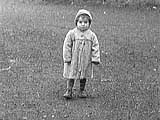
Where Will They Go? (1958)
Allan King: producer/director
28 minutes
A narrator tells about several families who were living in refugee camps in Austria in 1957. The film shows the problems, anger and despair of the people who have been in these camps since the end of the Second World War. One teenage daughter is out of control, one man's wife is dying of cancer and another man cannot stay out of jail. The film ends with one of the families having to move again as the camp is closed. They are not given a real home, they are simply moved to another camp.
 QuickTime clip: An introduction to the refugee camps
QuickTime clip: An introduction to the refugee camps
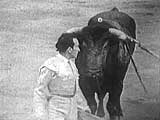
Bullfight
Allan King: director
20 minutes
The film uses a narrator and footage of several events in a Spanish bullfight to explain the history and attraction of bullfighting.
 QuickTime clip: The matador kills the bull.
QuickTime clip: The matador kills the bull.
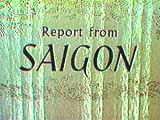
Report from Saigon (1959)
Allan King: director
30 minutes
An overall view of Saigon and the surrounding countryside. The film begins in the city as the narrator tells of the improvement in the standard of living in Saigon after the war, and moves to the farms to talk about the improvements in the farmers' lives due to the land reforms. Then the film looks at the indigenous people that live in the jungle and are still "primitive". The narrator states that the children of these people will accept the outside world even though their parents are closed-minded. Finally the film moves back to the city where the refugees are living in freedom thanks to democracy and American aid.
 QuickTime clip: A tour of the Saigon markets
QuickTime clip: A tour of the Saigon markets
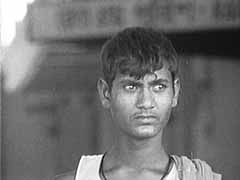
Rickshaw (1960)
Allan King: director
27 minutes
In this documentary a narrator tells us about the life of a rickshaw driver in Calcutta. The film centers upon Ram, a sixteen year old boy, who has come to the city to work as a driver. Ram is introduced to the job and the city by his father. The film ends with Ram working as a rickshaw driver and the father returning to their village. The film deals with the hard work and lack of a future in the job. However, it isn't totally depressing. It does show some of the lighter moments as Ram first sees the city and as Ram and his father get to know each other.
"The film I eventually made was rather different than the original reaction I had to poverty." -Allan King
 QuickTime clip: Ram works as an apprentice to a rickshaw driver.
QuickTime clip: Ram works as an apprentice to a rickshaw driver.
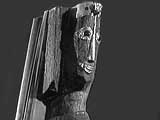
Josef Drenters (1961)
Allan King: producer/director/writer
26 minutes
Voice over tells the audience about Josef, a farmer who is also a well known sculptor. The film centers upon how Josef makes his work and then in a series of still shots shows some of his sculptures.
 QuickTime clip: Josef Drenters begins to carve
QuickTime clip: Josef Drenters begins to carve
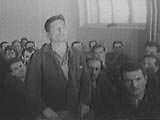
Yugoslavia
Allan King: director
27 minutes
"Yugoslavia," deals with life in the communist country under Tito's rule. The documentary, for the CBC's Close-up series, examines both the structure of the communist government and day to day experiences of particular individuals. Comparisons are also made among Yugoslavian standards of society and economy and those of the West.

A Matter of Pride (1960)
Allan King: writer and director
27 minutes
A documentary about a family dealing with the unemployment of the father. The film mostly consists of voice over narration and interviews with the husband and wife. Many of these interviews are very emotional but King allows the emotions to be watched and does not look away. King also uses reenactment to show a scene that the cameras were not there for. One can begin to see the ideas of Direct Cinema in this film.
"Although the husband was interesting, the wife was extraordinarily moving." -Allan King
 QuickTime clip: The National Employment Office in Hamilton
QuickTime clip: The National Employment Office in Hamilton

Dreams (1961)
Allan King: director
28 minutes
A documentary to show why the youth of Toronto (and the rest of Canada) are unhappy. There is a repetition of the "dream" of wanting to go somewhere else where everything is easier or at least different. In one conversation between a boy and a girl, the boy announces that he plans to leave Canada the next week. This gentle documentary includes both interviews and conversations with young people about what they want to do and how they feel. While at times very traditional, it shows the beginning of Allan King's use of Direct Cinema.
 QuickTime clip: A young man vents about the country.
QuickTime clip: A young man vents about the country.
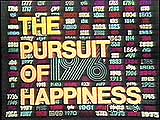
Pursuit of Happiness (1962)
A documentary about what makes Americans happy. The film travels across the United States and interviews different Americans about if they are happy and what makes them happy. The film is very broad in its approach, looking at everything from inventions to make life more comfortable, to how living in a retirement home can make one happy. However, by being so broad the film lacks focus, and the style is choppy as it jumps around to different subjects.
 QuickTime clip: Why Americans are happy.
QuickTime clip: Why Americans are happy.

Joshua, A Nigerian Portrait (1962)
Allan King: producer and director
1 hour
A long and broad documentary that follows one man around as he deals with his life in the city to which he has moved, and the village in which he was born. Through the use of a voice over Joshua's conversations are translated, his actions analyzed and his life explained to the audience. The focus shifts from Joshua's relationship with his immediate family, to the relationship with the elders in his village.
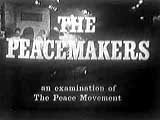
The Peacemakers (1963)
Allan King: producer/writer/director
48 minutes
A documentary about the international peace movement. The film looks at the reasons some people give for being pacifists. The film interviews people, includes protest marches and explains everything to the viewer with a voice over narration.
 QuickTime clip: An anti-nuclear peace march.
QuickTime clip: An anti-nuclear peace march.
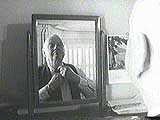
The Most Unlikely Millionaire (1964)
Allan King: writer and director
28 minutes
A documentary about a man living in Nova Scotia who lives a life of thrift and homegrown values while at the same time being a millionaire. The film follows this man around and uses both a narrator and his own voice to document his beliefs and experiences.
 QuickTime clip: The importance of investing other people's money.
QuickTime clip: The importance of investing other people's money.

Lynn Seymore: Our Dancing Export (1964)
A documentary on Canadian dancer Lynn Seymore who was training in London at the time. This film, which uses both voice over and interviews is not very exciting. However the uniquely Canadian view of Seymore is interesting at times.
 QuickTime clip: Lynn in the Studio.
QuickTime clip: Lynn in the Studio.
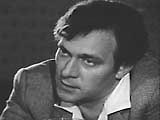
The Sound of Christopher Plummer (1964)
In this documentary, produced for the CBC's Telescope series, Christopher Plummer is filmed on set of the movie musical "The Sound of Music." He comments on making the transition from the theatre to film and the medium's advantages and disadvantages. Plummer also annotates clips from "The Fall of Rome," and "Hamlet."
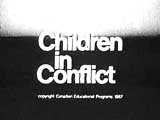
Children in Conflict (1967)
Allan King: producer
Using footage from the filming of Warrendale, this 18-part film series adds narration describing what is happening and why things are being done. The film was made for Brown Camps Ltd., to train other teachers for schools like Warrendale.
Episodes including:
- "Wake Up" (1967) 30 minutes
- "Talk With Irene" (1968) 30 minutes
- "Group Therapy" (1967) 60 minutes
- "School" (1967) 30 minutes
"Wake Up," documents the morning ritual for troubled kids at a residential treatment house. From opening the curtains to preparing the kids for school, the morning is a very trying time for the wakeup staff. Patience and flexibility must be exercised by those in charge to avoid a tedious battle between them and the kids.
"Talk With Irene," is a half-hour discussion with one of the treatment center's patients who has been part of the program for two years. Irene is an epileptic who also experiences violent outbursts and temper tantrums. In the conversation, Terry tries to get Irene to talk about her feelings regarding her two-year anniversary and the ways in which she thinks that she's changed since coming to the center.
In "Group Therapy," the staff gets to explore their own concerns about their lives and things that go on in the center that effect them personally. When becoming so intimately involved with the emotionally disturbed kids at the treatment center, staff must ensure they maintain their mental health. This is facilitated through an experienced psychiatrist who presides over the group therapy session.
"School," shows the life of kids at the center beyond wakeup. Educational emphasis is placed on activities that stress the interactions among the kids. Schooling also involves sports like hockey, that make the kids exercise discipline, and learn to deal with their emotions.
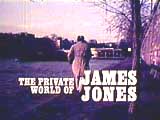
The Private World of James Jones (1967)
Allan King: produced by Allan King Associates
28 minutes
A documentary about the American writer James Jones, describing his early childhood, his experiences in the army, and how his life has affected his work. What is interesting about this film is that Jones often speaks directly to the camera.
 QuickTime clip: James Jones talks about his childhood.
QuickTime clip: James Jones talks about his childhood.
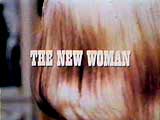
The New Woman (1968)
A documentary that looks at the lives of several women to show how their lives are different from, and similar to, the lives of women in the past. The film uses both interviews and voice over to explain the women's views, actions and beliefs.
 QuickTime clip: Who is the new woman?
QuickTime clip: Who is the new woman?
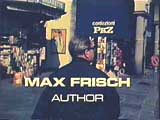
Who Is Max Frisch? (1968)
Allan King: executive producer
20 minutes
Produced for the CBC television show Who Is?, this is a good example of how interesting traditional documentaries can be. This piece about the Swiss author Max Fisch plays with the use of the narrator. Not only does his voice appear in the film, but he become a character as well.
 QuickTime clip: Max Frisch puts on a play.
QuickTime clip: Max Frisch puts on a play.
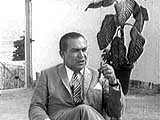
Batista
17 minutes
A documentary for the CBC television show CloseUp. The anchor for the show explains who Batista is, and the documentary itself is simply an interview with the ex-dictator of Cuba. The anchor appears once during the documentary to explain a question that Batista answers.
 QuickTime clip: Batista talks about terrorism.
QuickTime clip: Batista talks about terrorism.
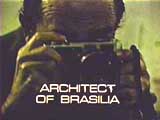
Who Is Oscar Niemeyer? (1966)
30 minutes
A documentary about the architect who designed many of the modern buildings of Brasilia. The film looks at the politics of Brazil and how Oscar is viewed in Brazil and the world. The film uses a voice over narration. This voice also translates for Oscar when he answers the interviewer's questions.
 QuickTime clip: Construction in Brasilia.
QuickTime clip: Construction in Brasilia.
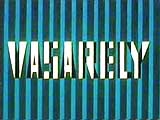
Who Is Vasarely? (1968)
Allan King: executive producer
30 minutes
A colour documentary about the artist Vasarely. The film is set in Provence, and employs a female narrator to describe Vasarely's work and his theories, often reciting Vasarely's own writing. The film also uses graphics extensively.
 QuickTime clip: Vasarely talks about art and technology.
QuickTime clip: Vasarely talks about art and technology.
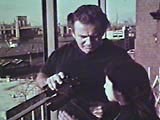
Will The Real Norman Mailer Please Stand Up
Allan King: director 30 minutes
This documentary explores the enigmatic persona of Norman Mailer, a writer and political activist. The film examines Mailer's views on the Vietnam war, his run-ins with the law, and tries to find out what Norman Mailer is truly seeking: political change, or personal popularity.

Six War Years (1975)
39 and 27 minutes
This piece for the CBC show Take 30, about the memories of Canadians during the Second World War, is based on the book of the same title by Barry Broadfoot. The documentary consists of a conversation between two men (the narrators), stock footage, and interviews with several Canadians who have very different memories of the war.
